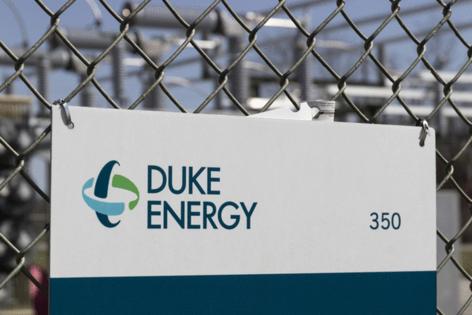Duke Energy files to merge Carolinas utilities, vows $1B in customer savings
Published in Business News
Duke Energy Corp. filed Thursday with state and federal regulators for permission to merge its two electric utilities in the Carolinas.
The Charlotte, North Carolina-based energy giant says the combination would give customers $1 billion in savings through streamlined operations.
Duke Energy Carolinas and Duke Energy Progress have operated as separate utilities since the 2012 merger of Duke Energy and Progress Energy, according to the company.
Duke Energy Carolinas covers the western half of North Carolina, including the Charlotte region, while Duke Energy Progress primarily operates in the eastern half of North Carolina, including the Triangle region. Both companies also serve parts of South Carolina. Combined, they serve nearly 5 million customers.
If approved, the effective target date of the merger is Jan. 1, 2027.
The move would create “a single utility, streamlining operations and significantly reducing costs for customers,” Duke said in a statement Thursday.
“Combining our two utilities reduces customer costs, simplifies operations, supports economic growth and promotes regulatory efficiencies, all of which will create value for customers in both states,” Kodwo Ghartey-Tagoe, executive vice president and CEO of Duke Energy Carolinas, said in the announcement.
“There will be no immediate changes to retail customer rates or services,” Ghartey-Tagoe added. “We look forward to sharing more details with our customers on how rates will evolve over time if the combination is approved by regulators.”
Duke Energy projects retail customer savings of more than $1 billion through 2038.
North Carolina and South Carolina will continue to regulate retail rates separately and will have independent discretion over the pace of retail rate integration.
Duke Energy officials did not immediately respond to requests for comment late Thursday.
Why Duke Energy wants to merge the companies
In 2012, Duke Energy and Progress agreed to a $32 billion merger, making Duke Energy the nation’s largest electric utility with 7.1 million customers in six states at the time.
Duke Energy Carolinas owns 20,800 megawatts of energy capacity, supplying electricity to 2.9 million residential, commercial and industrial customers in the Carolinas.
Duke Energy Progress owns 13,800 megawatts of energy capacity, supplying electricity to 1.8 million residential, commercial and industrial customers across a 28,000-square-mile service area in the Carolinas.
As Duke modernizes its infrastructure to meet the Carolinas’ growing energy needs, combining the 52,000-square-mile service area would avoid redundant investments and costs like maintenance and fuel. It also would improve grid reliability, according to the company.
Duke Energy touts benefits of merger
Duke Energy laid out five benefits of operating as one utility:
•New technology transmission. As one utility, Duke Energy can more effectively plan and operate new assets where they’re needed across the broader geographic area.
•Better reliability. The combined companies would improve distribution of resources and reduce the need to restrict solar production because of oversupply, grid congestion or lack of demand.
•Less confusion. Streamlined changes would simplify rates and service offerings, reducing customer confusion.
•Regulatory efficiencies. With two utilities operating in two states, Duke Energy must have four retail rate structures and produce four annual filings. The merger would reduce time and expenses needed to comply with regulators by eliminating duplicate proceedings.
•Customer savings. Spreading infrastructure investments over a larger customer base would help moderate rate impacts.
Merger approvals are required from the North Carolina Utilities Commission, the Public Service Commission of South Carolina and the Federal Energy Regulatory Commission.
More about Duke Energy
To meet energy demand, Duke also requested permission last month to build two natural gas-powered generators in Rowan County at the former Buck Steam Station site.
Duke Energy predicts that in the next 15 years, Carolina customers’ annual electric use will increase by about 58,000 gigawatt-hours, higher than the combined annual electric consumption of Delaware, Hawaii, Maine, New Hampshire and Wyoming combined.
Duke Energy serves 8.6 million customers in the Carolinas, Florida, Indiana, Ohio and Kentucky.
Its natural gas utilities serve 1.7 million customers in North Carolina, South Carolina, Tennessee, Ohio and Kentucky. The company employs over 26,000 people, including about 4,500 workers at its Charlotte headquarters.
©2025 The Charlotte Observer. Visit at charlotteobserver.com. Distributed by Tribune Content Agency, LLC.












Comments